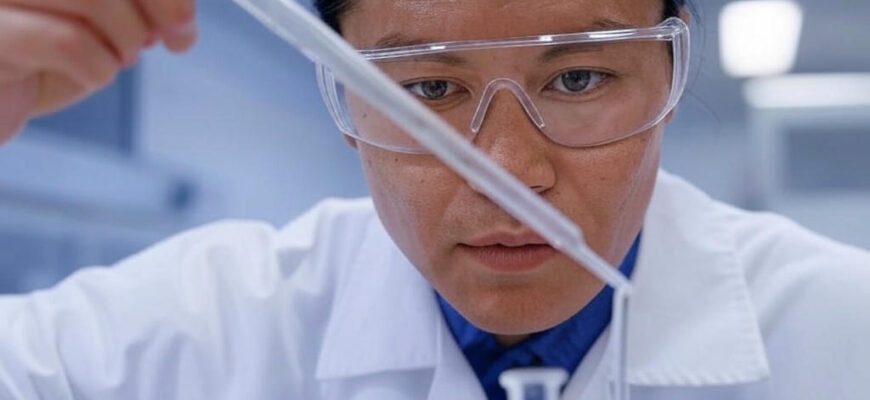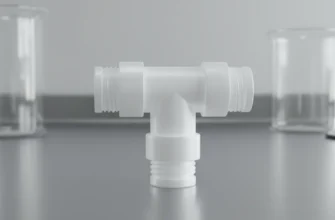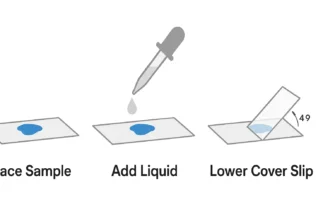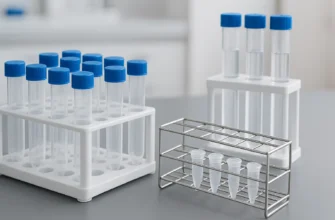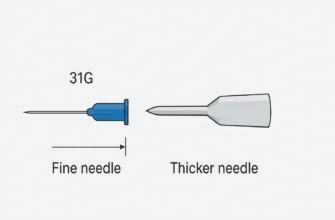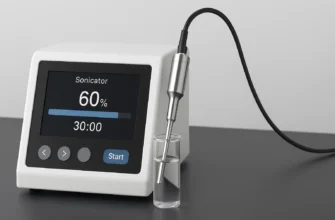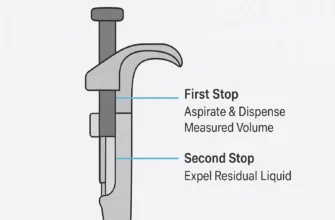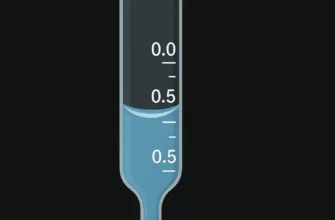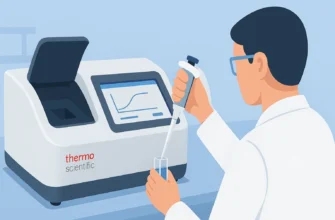Graduated Pipettes in Chemistry Labs: Functions, Types, and Applications
Graduated pipettes are indispensable tools in modern chemistry laboratories, providing scientists with the ability to measure and transfer precise volumes of liquid. These carefully calibrated instruments form the backbone of accurate experimental procedures and reliable analytical techniques. This comprehensive guide explores the various aspects of graduated pipettes, their design features, proper usage techniques, and diverse applications across scientific disciplines.
What Are Graduated Pipettes?
Graduated pipettes are laboratory instruments designed for the accurate measurement and transfer of specific volumes of liquid. Unlike volumetric pipettes that deliver only a single fixed volume, graduated pipettes feature a series of calibration marks along their length, allowing scientists to measure and dispense variable volumes of liquid with high precision.
These essential tools typically consist of a long, narrow tube of glass or plastic with measurement graduations etched or printed along the shaft. The graduations indicate volume measurements, typically in milliliters (mL) or fractions thereof, enabling users to measure precise quantities according to experimental requirements.
Key Features of Graduated Pipettes
Graduated pipettes possess several distinguishing characteristics that make them valuable in laboratory settings:
- Graduated Markings: Clear markings along the length of the pipette allow for measurement of various volumes
- Material Composition: Typically made from soda glass or plastic, with glass versions offering excellent chemical resistance and durability
- Size Range: Available in various sizes, commonly ranging from 1 mL to 25 mL capacity
- Precision Measurement: Smaller pipettes generally provide higher precision for critical measurements
- Calibration Standard: Often manufactured to meet specific tolerance standards, with Class A pipettes offering the highest precision
Types of Graduated Pipettes
Graduated pipettes come in several varieties, each designed for specific laboratory applications and measurement techniques.
Mohr Pipettes
Mohr pipettes are a common type of graduated pipette characterized by their design as drain-out pipettes. The distinctive feature of Mohr pipettes is that their graduation markings do not begin until well past the base of the tip. This design allows for precise control when dispensing liquids and makes them particularly suitable for applications requiring high accuracy, such as titrations.
Serological Pipettes
Serological pipettes are designed as blow-out pipettes, with graduation marks that begin near the end of the tip. Unlike Mohr pipettes, serological pipettes are calibrated to deliver their entire contents, including the last drop, which must be expelled by blowing air through the pipette using a bulb or pipette pump. These pipettes are commonly used in biological and medical laboratories.
Calibration Classifications
Graduated pipettes are further classified based on their calibration standard:
- TD (To Deliver) Pipettes: Calibrated to deliver the specified volume when allowed to drain naturally, with the last drop remaining in the tip
- TC (To Contain) Pipettes: Calibrated to contain the specified volume, requiring blow-out to deliver the entire volume
- Class A Pipettes: Meet stringent accuracy requirements and provide the highest precision for critical measurements
- Class B Pipettes: Have wider tolerance limits than Class A pipettes
How Graduated Pipettes Work
Basic Operating Principles
The operation of graduated pipettes relies on several physical principles including gravity, surface tension, and pressure differences. When using a graduated pipette:
- A pipette bulb or pump creates negative pressure to draw liquid into the pipette
- The liquid level is adjusted to the desired graduation mark
- The liquid is dispensed either by gravity (for TD pipettes) or with assisted blowing (for blow-out pipettes)
- Surface tension causes a small amount of liquid to remain in the tip of TD pipettes
Proper Reading Technique
Accurate measurement with graduated pipettes requires proper reading technique:
- The pipette should be held vertically
- The meniscus (curved surface of the liquid) should be read at eye level
- For most aqueous solutions, the bottom of the meniscus should align with the graduation mark
- Readings should be taken to the nearest 0.01 mL for maximum precision
Calibration of Graduated Pipettes
Graduated pipettes require proper calibration to ensure accuracy in laboratory measurements.
Calibration Procedure
The standard calibration procedure for graduated pipettes involves:
- Drawing de-mineralized water into the pipette to a specific graduation mark
- Dispensing the water into a pre-weighed container
- Measuring the weight of the dispensed water
- Calculating the actual volume using the density of water at the calibration temperature (typically 25°C)
- Comparing the calculated volume with the nominal volume to determine accuracy
Frequency of Calibration
Calibration should be performed:
- Upon receipt of new pipettes
- Periodically as part of laboratory quality control procedures
- After any repair or suspected damage
- When high precision measurements are critical to experimental outcomes
Proper Usage Techniques
Basic Operation Steps
- Preparation: Ensure the pipette is clean and dry before use
-
Liquid Uptake: Squeeze the bulb to expel air, place the tip in the liquid, and slowly release the bulb to draw liquid into the pipette
-
Volume Adjustment: Adjust the liquid level precisely to the desired graduation mark
-
Dispensing: Allow the liquid to drain by gravity (for TD pipettes) or assist with blow-out (for TC pipettes)
-
Control: Use your finger or thumb to control the flow rate of liquid during dispensing
Common Errors and Prevention
Several errors can affect the accuracy of measurements with graduated pipettes:
- Improper Reading: Reading the meniscus at an angle rather than at eye level
- Drainage Issues: Not allowing sufficient time for proper drainage
- Improper Blow-out: Using incorrect technique for blow-out pipettes
- Temperature Effects: Failing to account for thermal expansion of liquids
- Contamination: Using pipettes with residues that affect liquid behavior
Applications in Chemistry Laboratories
Graduated pipettes serve numerous essential functions in chemistry laboratories:
Analytical Chemistry
- Preparation of standard solutions for calibration curves
- Transfer of precise volumes during titrations
- Sample preparation for spectroscopic analysis
- Dilution of concentrated solutions to specific concentrations
Organic and Inorganic Synthesis
- Measurement of reagents for chemical reactions
- Addition of catalysts in precise amounts
- Controlled addition of reactants in time-sensitive reactions
Quality Control
- Preparation of quality control standards
- Verification of concentration in manufactured products
- Testing of product formulations in the pharmaceutical and food industries
Research Applications
- Precise measurement of reagents for experimental protocols
- Preparation of solutions for biological assays
- Sample preparation for chromatographic analysis
Advantages and Limitations
Advantages
- Versatility: Ability to measure variable volumes with a single instrument
- Precision: High accuracy for critical measurements when properly used
- Cost-effectiveness: Reusable nature makes them economical over time
- Chemical Resistance: Glass versions resist most laboratory chemicals
Limitations
- User Skill Dependency: Requires proper technique for accurate results
- Time Requirements: Proper drainage takes time for accurate measurement
- Fragility: Glass pipettes are susceptible to breakage
- Environmental Considerations: Plastic disposable versions contribute to laboratory waste
Best Practices for Maintenance
Cleaning Procedures
- Rinse immediately after use with appropriate solvent
- For most aqueous solutions, rinse with distilled water followed by final rinse with the liquid to be measured
- For organic solvents, rinse with compatible solvent followed by final rinse with the liquid to be measured
- Avoid cross-contamination by using dedicated pipettes for specific reagents when possible
Storage Recommendations
- Store clean, dry pipettes horizontally in dedicated drawers or cabinets
- Protect glass pipettes from physical damage with appropriate storage containers
- Consider dedicated pipette washers for laboratories with high-volume usage
Environmental Considerations
While glass graduated pipettes are reusable and environmentally friendly, disposable plastic pipettes contribute to laboratory waste. Some laboratories in resource-limited settings wash and reuse plastic pipettes, though this practice can introduce contamination in sensitive experiments. Sustainable laboratory practices encourage:
- Using glass pipettes when possible
- Recycling pipette packaging
- Reusing pipette tip boxes with refill systems
- Proper disposal of contaminated materials according to laboratory safety protocols
Conclusion
Graduated pipettes remain fundamental tools in chemistry laboratories despite technological advances in liquid handling. Their versatility, precision, and reliability make them indispensable for accurate measurement and transfer of liquids across diverse scientific applications. Proper understanding of pipette types, calibration methods, and usage techniques ensures the highest level of experimental precision and reproducibility in laboratory work.
Whether used in analytical chemistry, research settings, or quality control applications, graduated pipettes continue to serve as critical instruments for scientists requiring precise volumetric measurements. Mastering the proper techniques for using these instruments is an essential skill for laboratory professionals and students alike.

